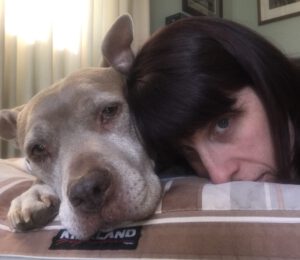How to Fail at Dog Training

When working with clients, I find that people often have high expectations for themselves and for their dogs. Having high expectations is fine, but make sure that you and your dog can reach those goals. For example, if you want to train your chihuahua to jump 6 feet, you can’t succeed unless you change your expectations. If you spray your dog with water as a deterrent for barking or jumping at something, but want to train him to enjoy a bath, you can’t succeed unless you change your expectations and your behavior. You must work within the physical and emotional capabilities of your dog. Every dog is an individual and training is specific to that individual. The following is a list of expectations that show you how to fail at dog training.
1. Expect that Your Dog Will Be “Fixed” After the First Training Session. Any “trainer” who promises you this, or supports this expectation, likely relies on fear and intimidation to change a dog’s behavior. By going this route, people can ensure that a) their dog’s behavior will decline in other ways, and b) the relationship between the dog and the pet parent will be compromised.
Fear and trust are mutually exclusive. There is no one I fear who I also trust, and there is no one I trust who I also fear. Your dog cannot be afraid of you and trust you at the same time. A dog’s progress depends on his history, his behavioral issues, and the amount of practice his pet parent is willing to give. Encouraging the behavior you are seeking could take two sessions or several. Give yourself and your dog a chance to learn and to succeed by giving yourself time.
2. Expect That Once Your Dog Has Learned A New Behavior That It Will Stick Without Practice. This is pretty common thinking in both dog training and in human behavior, in general. We tend to think this way about ourselves: “I’m good enough at this and don’t need to practice.” We, of course, know that is not true; the truth is that we don’t always feel like practicing. In dog training, as with anything else in life, you get out what you put in. The more you practice, the better you and your dog will get. And if you stop practicing, the skills of both you and your dog will deteriorate.
If you socialize your puppy when he is young, you are helping that dog learn to be around other dogs, but that socialization needs to continue into adulthood or your dog will likely develop issues with dogs he has never met. Training and learning need to continue throughout the dog’s life. This reminder will increase your success in dog training.
3. Expect That Equipment Will Do the Job For You. People typically use a choke chain, a prong collar, or a shock collar, I usually to control their dogs. Most people are not interested in harming their dogs to get them to “behave,” but that is what these collars do: they are used directly to cause short-term pain and they consequently cause long-term physical and psychological damage.
I prefer harnesses. They do not magically make the dog walk calmly on a leash, but I can train without worrying that the equipment is working against me. I can concentrate on teaching skills, rather than trying to counteract the effects of pain that these collars are causing. The dog cannot learn while he is in pain or, at the very least, is uncomfortable. If you had to learn to play piano while wearing shoes that were 2 sizes too small, you may not learn how to play at all. You might learn to dislike your teacher as well as hate practicing the piano. Using a harness benefits your dog and sets you up for successful dog training.
4. Expect That Your Dog “Should Be” Like Your Previous Dogs Or Other Dogs. Every dog is unique, even dogs who are the same breed. Dogs, like humans, are animals, not robots. When we expect that dogs “should” act a certain way, we are limiting them from their actual potential. This is not to say that you cannot have realistic expectations. For example, you want a dog who does not jump up on counters for food. Both management and training can help to stop or redirect that behavior.
Understanding that dogs are a mixture of nature and nurture will help you realize the full potential of your dog. Your lab may surprise you and be able to accomplish certain behaviors that your previous dogs could not! There is a pleasant surprise in working with every dog as an individual!
5. Expect Progress to Be Constant. Progress means you move forward, and with practice and consistency, your dog will progress, whether in small or big steps. But know that there are sometimes setbacks. Allow for these. We all have our “off” days; sometimes we do not feel like practicing or cannot focus as well as we did the day before. When you are training and you feel that maybe the session is not going well, give yourself and your dog a break! We do better when we get small breaks and vacations from our hard work. Keeping yourself in a good and positive state of mind will help your dog, too.
My job as a dog trainer is not to make people feel bad for choices they have made in the past, but to educate them so that they can make better choices in the future. You are the key to successful dog training. Don’t lock yourself out by unrealistic expectations.
Lynn Webb, M.A., KPA CTP, CTMT


